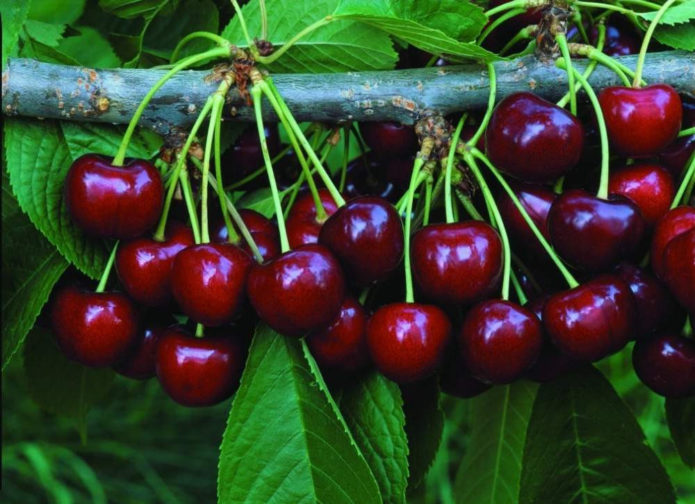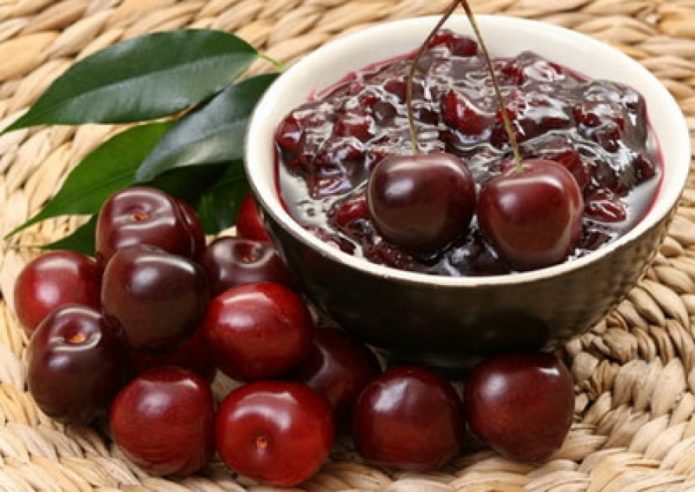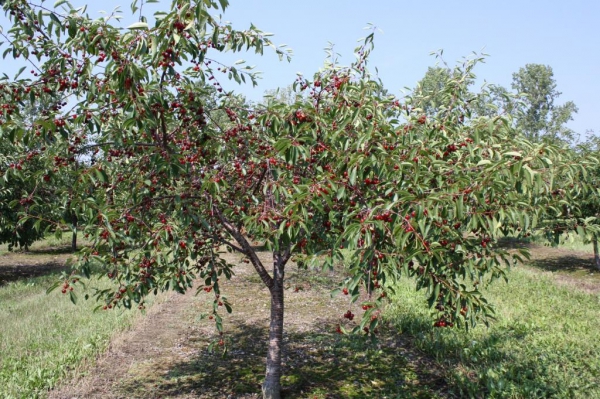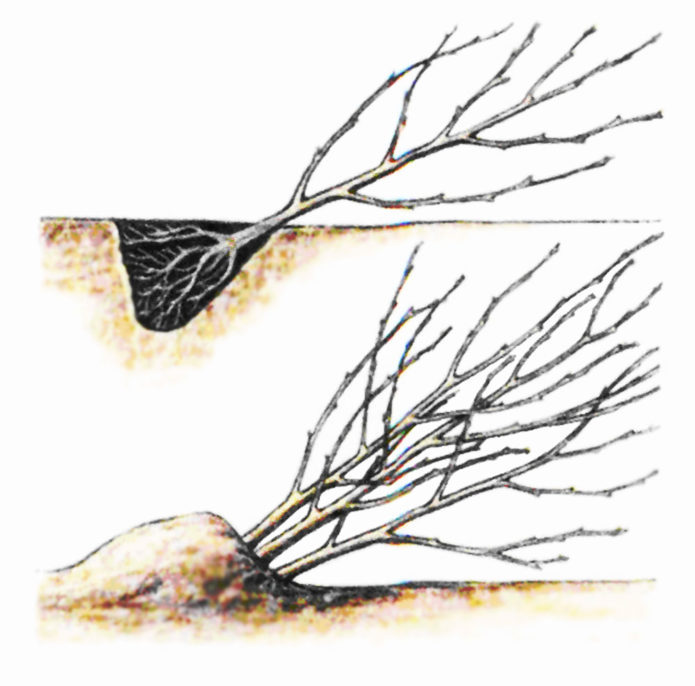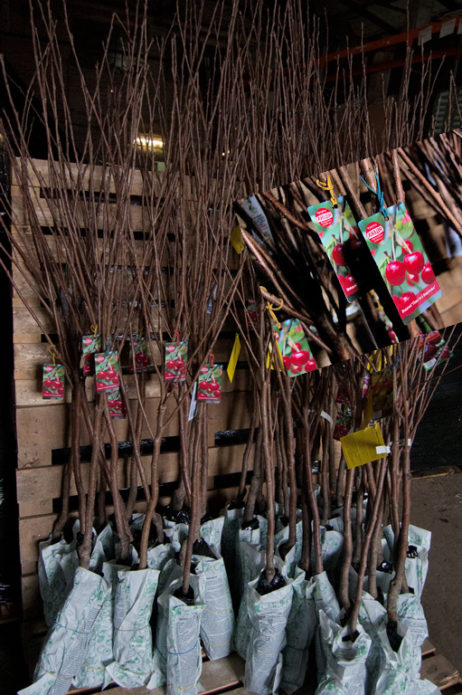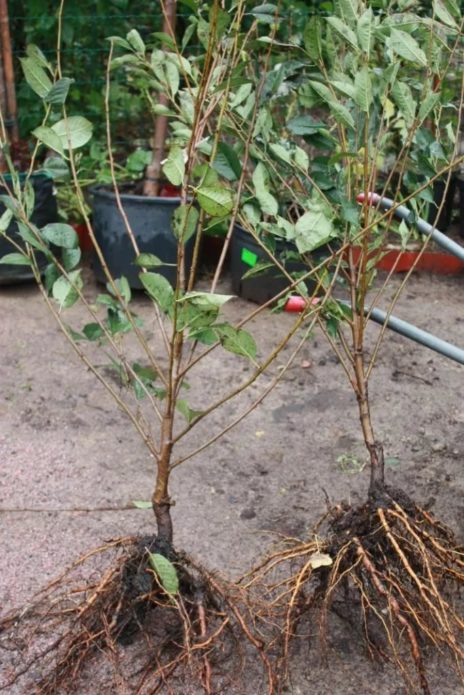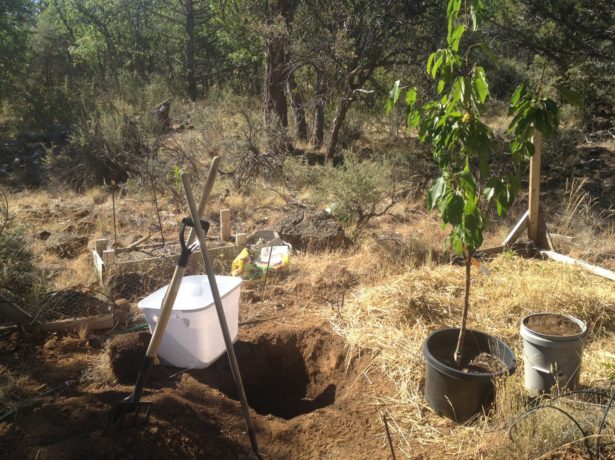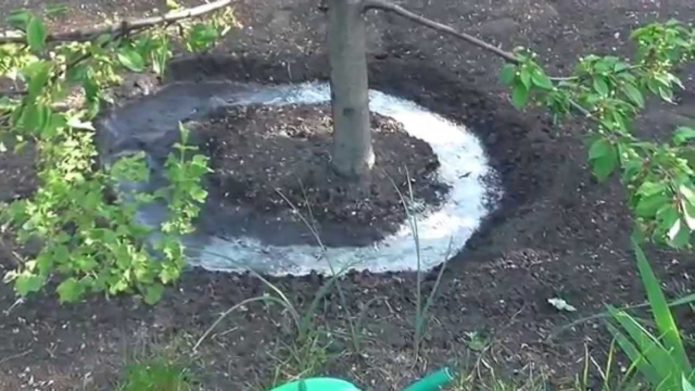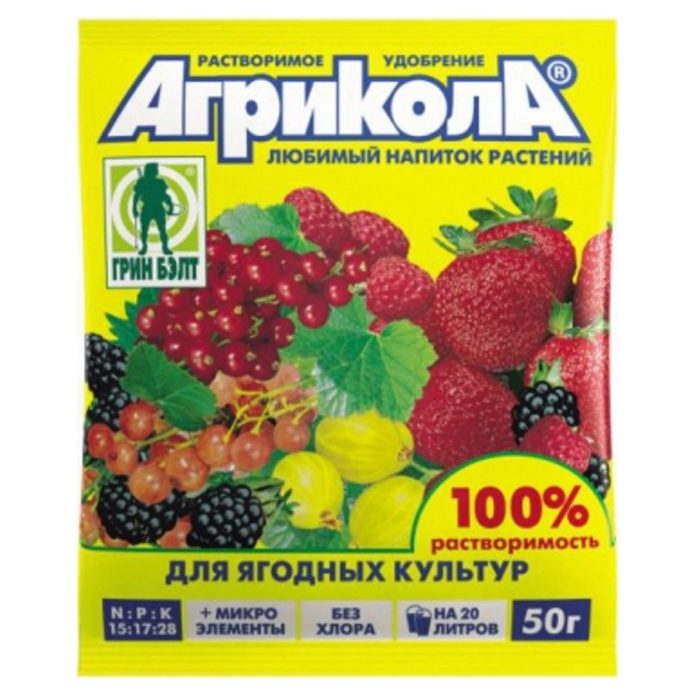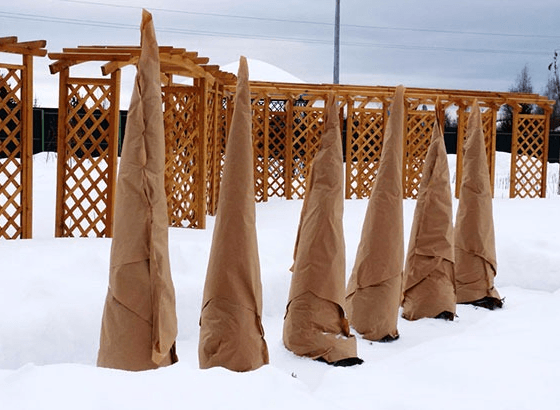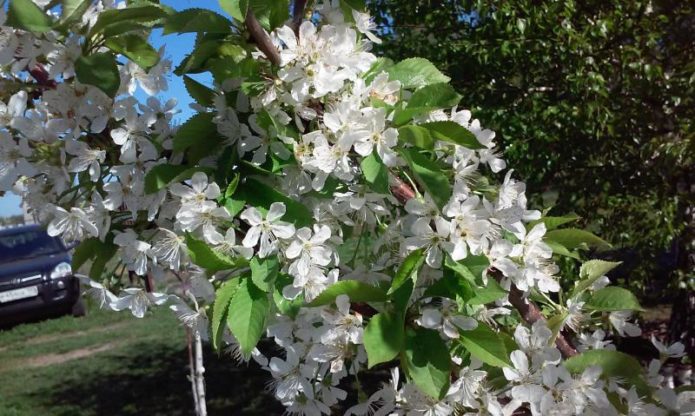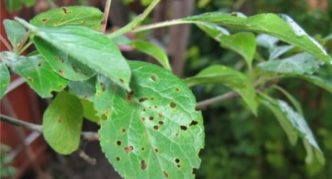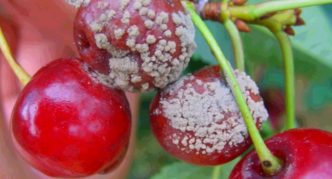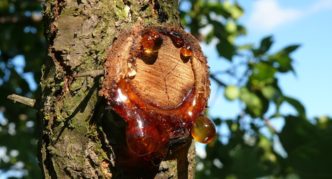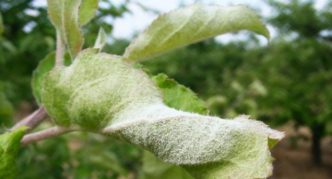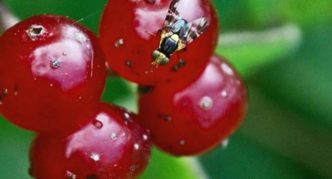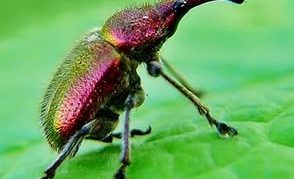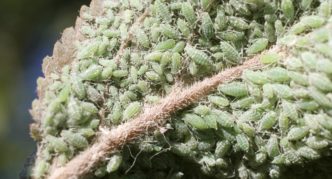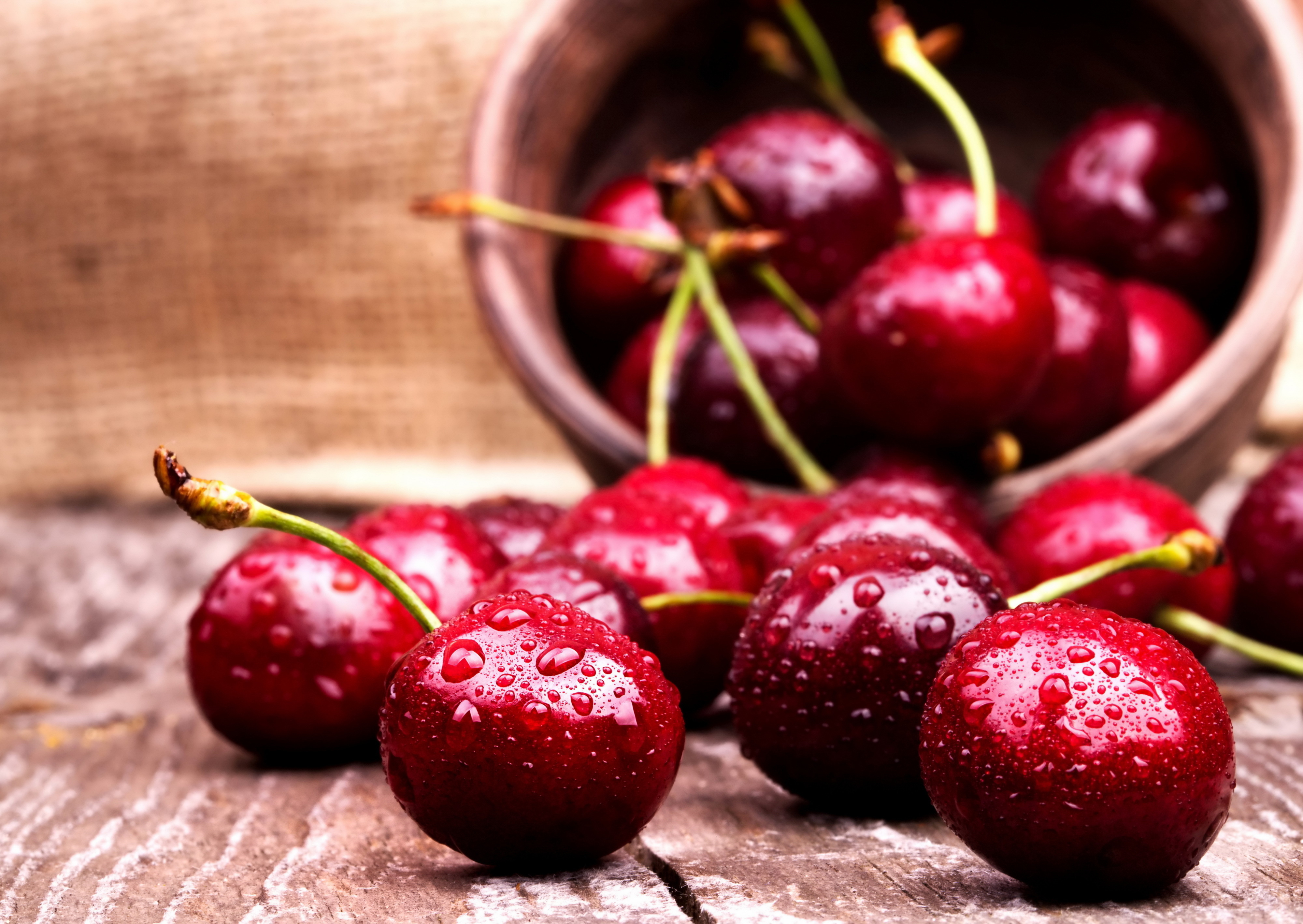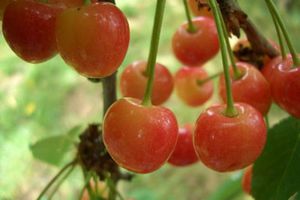Sweet cherry is considered to be a heat-loving plant; it was previously grown only in the southern regions. However, as a result of breeding work on crossing many hybrids, frost-resistant varieties were obtained, and gardeners of the central regions of Russia were able to grow this crop on their plots. Among these varieties is the Veda cherry.
Content
History of the Veda variety
At the end of the 19th century, I.V. Michurin began work on the cultivation of frost-resistant types of sweet cherries. In the 30s of the XX century, 13 winter-hardy varieties were obtained, but all of them were small-fruited and gave small yields. Russian scientists continued to conduct breeding work. The leader of the domestic selection was M.V. Kanshin. At the All-Russian Scientific Research Institute of Lupine Together with her colleagues, she created 14 new winter-hardy cherry varieties, including Vedu.
Description of cherry Veda
Variety Veda was introduced to the State Register in 2009 for the Central Region. Cherry of late ripening, is distinguished by high winter hardiness of the tree and flower buds, which allows it to be cultivated in the Bryansk, Ryazan, Smolensk, Moscow, Tula, Kaluga, Vladimir and Ivanovo regions, where in winter the temperature can reach -30aboutFROM. The variety is self-fertile, requiring the presence of pollinating trees for harvesting.
Characteristic
Cherry Veda is a medium-sized tree with a spreading dense rounded crown. Shoots are straight, non-pubescent, olive-gray. The tree is fast growing. Large green leaves, ovoid, short-pointed, with jagged edges. The leaf plate is smooth, matte, with a slight sheen, leathery. The petiole is thick.
Fruits are medium in size (weighing about 5 g), wide-heart shaped. The skin of the berries is soft, smooth, of a dark red hue, with a few noticeable subcutaneous dots. The pulp is dark red, tender, juicy, sweet, taste rating - 4.6 points. The juice is dark red. The bone is well separated from the pulp. Average yield - 77 c / ha. Fruiting occurs in the 4-5th year. The crop ripens at the end of July. The berries are consumed fresh, used for conservation - making juice, compote, jam.
Landing
The cherry orchard is planted for many years. Future harvests depend on the location, soil nutrition, selection of seedlings.
Seat selection
When choosing a place for fruit trees, one should take into account the soil composition, the depth of the groundwater flow, illumination and the availability of protection.Planting should not be planned in low-lying wetlands where water accumulates after showers. It is better to plant trees on gentle slopes, warmed by the sun. The more sun rays the cherries get, the sweeter the berries will be.
Planting density - 4–5 m. It is necessary that trees, as they grow, do not touch each other with branches.
The groundwater level must be at least 1.5 m. If it is impossible to find another site, drainage grooves must be made to drain excess moisture. Otherwise, the tree will inevitably face rotting roots or even death. With an excess of moisture, the growth of shoots slows down, by the age of 5 years the top of the tree dries up, and then small branches.
Sweet cherry grows well on loose sandy loam soil with good water and air permeability. Sandy soils are less suitable, and heavy clay areas, as well as those with high acidity, are not suitable. The composition of the soil can be improved: dilute the clay with sand (bucket / m2), add lime to acidic soil (500 g / m2).
It is useful to grow dill, sage, marigolds, calendula near cherries, which scare off pests. But it is not recommended to plant corn and sunflowers nearby: these tall plants create shade and greatly deplete the soil.
Boarding time
Cherries are planted during the dormant period of the root system, in spring or autumn. In temperate climates, it is better to plant seedlings in early spring, since during autumn planting there is a high risk that they will not have time to take root before frost. In the south, you can plant a crop in the fall (until mid-October), but no later than 2 weeks before the onset of cold weather: then the plants will have time to take root and get stronger. Seedlings in a container, planted with the ground, take root perfectly all season.
Planting material purchased in late autumn is buried on the site. To do this, make a trench 45 cm deep with one inclined wall, lay seedlings on it, sprinkle it with earth, cover with spruce branches to protect it from rodents.
Selection of seedlings
Seedlings should be purchased in nurseries and botanical gardens, where they are directly involved in the cultivation of crops. Each plant undergoes control there and necessarily has a certificate with information about the age of the seedling, variety, zoning. Preference should be given to 1–2 year old plants. When choosing, you must carefully examine the seedlings.
2-year-olds should have at least 3 skeletal roots with many fibrous processes, without damage or rot. The crown should consist of 3 lateral branches 50 cm long and a conductor. The trunk 10 cm from the root collar is slightly curved - this is the place of grafting.
Landing
The site is prepared 3 weeks before disembarkation. The soil is dug up, weeds are removed, holes are dug 60x80 cm. The fertile layer of earth is mixed with 1 bucket of humus, 150 g of double superphosphate, 50 g of potassium sulfate or 400 g of ash.
Step-by-step planting process:
- At the bottom of the pit, a part of the fertilized soil is poured in the form of a cone.
- A seedling with straightened roots is lowered onto it. Container plants are planted with the soil.
- Set the peg.
- They cover it with soil, tamp it so that the earth fits snugly to the roots. The root collar should be 5 cm higher than the soil.
- A circular hole is formed, 2 buckets of water are introduced into it.
- The tree is loosely tied to the support, which will protect it from swaying in gusts of wind.
When planting at the beginning of the season, the crown is immediately cut. When planting in autumn, pruning is not carried out, shortening of the shoots is carried out the next spring.
So that young seedlings do not suffer when the temperature drops, experienced gardeners cover them at first after planting with agrofibre or spray them with Novosil's solution, which increases the immunity of plants.
Video: rules for planting seedlings of fruit trees
Care
The time and effort spent on caring for cherries will pay off with a good harvest in the summer.
Watering
Young trees immediately after planting are watered once a week (30 liters per plant). Fruiting plants are moistened 3 times per season: in the green cone phase, during the formation of ovaries and after fruiting at the rate of 5 buckets per plant. In dry summers, they are watered more often. After the foliage has fallen, winter watering is carried out (70 liters per tree), which is necessary for a good wintering.
When the berries ripen, watering is not carried out to avoid cracking.
Cherry is watered by pouring water into special grooves, using a drip irrigation system or by sprinkling.
- Circular watering grooves are made along the perimeter of the crown with a depth of 15 cm.
- For irrigation of fruit trees with sprinkling, hoses with sprinklers are used, while not only the roots, but also the crown are moistened, which is especially important in hot dry weather. It is advisable to water the cherries in the evening so that the water evaporates more slowly.
- With drip irrigation, the tape is laid around the trunk in a spiral, water flows evenly through the droppers, while the root zone is well moistened, the earth does not stick together, providing intensive respiration of the roots.
However, uncontrolled watering of trees can negatively affect their development: excess moisture leads to the development of diseases, the appearance of spots and rot on them. It is not difficult to determine how well the soil is moistened: squeeze the soil from under the crown in the palm of your hand - if the lump does not crumble, then the cherries should not be watered anymore.
Fertilizers
A nutritional deficiency will definitely affect the development of the plant and the yield. It is necessary to feed cherries throughout the season. By the appearance of the tree, you can determine what elements it needs:
- iron deficiency is indicated by premature fall of foliage;
- with a lack of boron, the leaves are deformed and dry out;
- the lack of copper can be judged by small brown spots on the leaf plates, drying of the shoots;
- if the leaves become smaller, it means that the plant lacks zinc.
In the first year, the cherries do not need feeding if the planting pit is well filled with fertilizers. The next spring, to build up the root system and crown, the seedling is fed with ammonium nitrate (60 g / 10 l). After 10 days, feed on the sheet with urea (2 tbsp. L / 10 l). In September, feed with a phosphorus-potassium solution (2 tbsp. L / 10 l).
For fruiting trees, fertilization is required 5 times:
- At the end of March, ammonium nitrate (20 g / m2) are embedded in the soil.
- Before flowering, add superphosphate (50 g / 10 l), after flowering - nitrophosphate (50 g / 10 l).
- After harvesting, to restore strength, the tree is fed with potassium sulfate (100 g) and superphosphate (100 g / 10 l).
- Before the onset of cold weather, humus is laid along the perimeter of the crown.
Foliar feeding of cherries with liquid fertilizers is a guarantee of the growth and quality of the crop. Sprinkle with Agricola (50 g / 10 l), Zdraven-aqua (35 ml / 10 l) on the leaf during the growing season with an interval of 14 days. This improves the development of the root system, the formation of ovaries.
Gardeners with many years of experience prefer to combine organic and mineral fertilizers. In the spring, when the culture needs nitrogen, add mullein (3 kg / 30 L) or chicken manure (2 kg / 30 L).
Improves soil structure and green fertilization. Siderates (lupine, peas) are sown in the aisles, mowed in autumn and the whole green mass is plowed. Rotting, it turns into an organic nutrient rich in microelements.
Pruning
A cherry tree is usually formed in a sparse-tiered type. The distance between the tiers must be at least 0.5 m, in each tier there are 3 skeletal branches. Immediately after planting, the guide wire is shortened so that it is 5–6 buds longer than the lateral branches.
Often a strong competitor shoot grows at the base of the trunk at an acute angle. You need to get rid of it by cutting it into a ring.
At the beginning of the second season, branches are cut on the bottom row, leaving the 3 strongest ones. They are cut by 1/3. The central shoot is cut at 1 m from the bottom row. In spring pruning in the 3rd year, a second tier of 3 shoots is formed, the guide is shortened at a height of 1 m from the second row. For the next season, 3 branches are left in the last (third) tier.
With age, the tree begins to bear fruit weaker, the crown grows. To thin out the crown and get rid of old branches, anti-aging pruning is carried out. In spring, 4–5-year-old branches are replaced with young lateral shoots. After leaf fall, dried and damaged branches are removed.
Video: pruning cherries in spring
Preparing for winter
Veda is a winter-hardy variety, however, it is advisable to insulate young trees in the first 3 years. After watering and mulching the soil with humus, the plants are covered with agrofibre, needles. To avoid damping out, cherries are insulated in the established cool weather (00FROM). When the temperature rises to 50They remove from the shelter.
Contrasting temperatures at different times of the day often lead to damage to the bark, which increases the risk of developing fungal diseases. To protect the tree from sunburn, the trunk and skeletal branches must be whitewashed with a lime solution at the end of October, to which insecticides from pests can be added.
Pollinators
Cherry Veda is a self-infertile variety, without pollinating trees it will bloom profusely, but only single fruits will be tied. A good harvest can be obtained only by growing at least 2 different varieties of crops in the garden. At 4–5 m from the Veda, for pollination, you can plant cherries that coincide in terms of flowering: Leningrad black, Iput, Tyutchevka, Revna, Bryanochka.
In a small area, in order for the sweet cherry to bear fruit, instead of planting seedlings of other varieties, experienced gardeners plant 2-3 varieties of sweet cherries in the crown.
To improve pollination, during the flowering period, you can spray the branches with water with honey or sugar - bees will immediately flock to sweets. Or plant melliferous herbs next to the sweet cherry: lemon balm, mint, yarrow, oregano.
Disease prevention
The variety is resistant to the most common crop diseases - moniliosis and coccomycosis. Preventive measures will help to avoid attacks of parasitic insects.
Table: diseases that cherries can be exposed to
| Diseases | Symptoms | Prevention | Treatment |
| Clasterosporium disease | Spots appear on the foliage, and holes soon form in their place. The leaves dry up. The development of a fungal disease is facilitated by the thickening of the bush and high humidity. |
|
|
| Gray rot | The disease develops in damp weather. Gray growths appear on the shoots, the fruits begin to rot. |
|
|
| Gum therapy | A sticky, viscous mass appears on the trunk and branches. Causes of gum flow - trauma to the cortex, temperature drops. |
| Clean the wounds, treat them with a 1% solution of copper sulfate. |
| Powdery mildew | An off-white coating forms on the bark, leaves and shoots. Foliage falls off, yield decreases. |
|
|
Photo gallery: cherry diseases
- With clotterosporia, holes appear on the leaves
- Dampness contributes to the development of gray mold
- Gum therapy greatly weakens the tree
- A whitish coating forms on the bark and leaves of a tree affected by powdery mildew
Table: pests threatening cherries
| Pests | Manifestations | Prevention | Treatment |
| Cherry fly | The larvae, feeding on the pulp of the fruit, can damage up to 70% of the crop. |
| After flowering, spray with Iskra (1 ml / 5 l), Aktara (2 g / 10 l), again after 7 days. |
| Weevil | Beetles eat buds and leaves. |
| Spray in the green cone phase with Fufanon (10 g / 10 l). |
| Aphid | The pest sucks out plant juices, depletes them, which leads to a decrease in yield. |
| Spray the tree before and after flowering with Aktara (2 g / 10 l), Aktellik (2 ml / 2 l). |
Photo gallery: insects that harm cherries
- Cherry fly larvae can kill a significant portion of the crop
- Weevil damages the buds, resulting in lower yields
- Gluttonous aphid quickly destroys leaves and shoots
Video: processing a garden from a cherry fly
Reviews
Growing Veda - dark red fruits. Cherry tolerated frosts down to -30; -40 degrees.
The Veda ripens at about the same time as Revna and Tyutchevka. Households eat jealous and Tyutchevka in a week. Nobody cuts off the lead, I don't like it. It remains hanging on the tree until the birds eat it.
Cherry Veda conquered gardeners not only with its ability to endure the harsh winters of central Russia. The opportunity to feast on sweet berries attracts, as well as the extraordinary beauty of a flowering tree. Therefore, more and more often in the design of gardens and parks, cherries are used instead of decorative crops.

